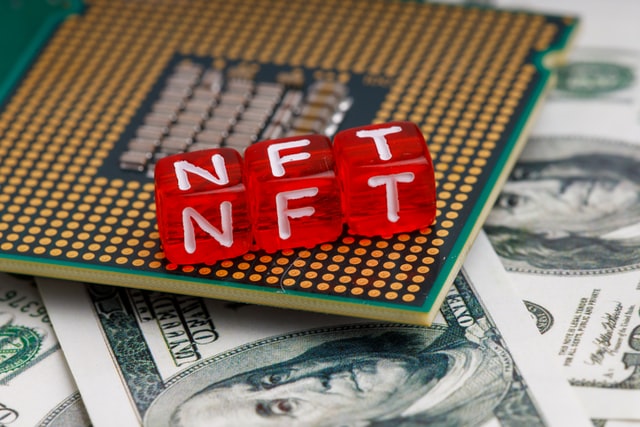
An NFT is a ‘non-fungible token’, where a fungible item is one that can be mutually exchanged for another one, and be of the same exact value, like 2-dollar bills. So non-fungibility means that each one is unique and could have a very different value from one another, depending on the properties assigned to it. Having cleared that up we can discuss why they are suddenly all the rage. Actually, the first NFT was minted on 3rd May 2014 by the digital artists Anil Dash and Kevin McCoy. Their short video clips were called Quantum and were minted on the Namecoin blockchain, they later sold it for $4 to Dash.
But it was in 2017 that the CryptoKitties online game became profitable by selling tradable cat NFTs. That made many more people aware of them. Then NFTs experienced a rapid growth phase in 2020 with a valuation of over US$250 million and that s when the exponential growth really started. Now it is not uncommon for individual NFTs to sell for over a million dollars. The most valuable NFT to date is the Beeple Everydays series, selling for US$69.3 million. The NFT industry as a whole is expected to top US$800 Billion in the next 2 years.
What are NFTs used for?
NFTs can be used to make a digital or physical object into a unique virtually tradable asset, so their use is really only limited by the imagination of the users.
Digital NFT Assets
NFTs have become well known for making digital art in the form of drawing, photographs, video, and music, into a unique collectable item of value. This has been a salvation to artists who have suffered from the ability of computers to copy their work to an unlimited degree and the internet has allowed these copies to be distributed globally at no cost. So finally, NFTs allow them to make their work unique and even add in smart features like limited plays and self-destruct or limited copies. It has opened up a whole new set of industries in the digital art field. Also, NFT fan engagement has seen a massive uptake across sports and other collectables.
Physical NFT Assets
It is also possible to attach an NFT to a physical object in the real world in order to make it tradable in the digital world. This has been done with everything from paintings to property, and although this market is in its infancy recent adoption has shown that it is set to grow in the same way that digital asset NFTs have done.
Why is the sports industry adopting NFTs?
The sports industry has a long history of collectables, after all, many devoted fans are interested in collecting anything relating to their favourite team or sports stars. In the past, it has been items like cards, replicas, or pictures. Or the rare items might have been signed shirts, bats, balls, and the like.
But now with NFTs, it can include one-off footage of sporting events like goals, photographs, drawings, signed objects, VIP tickets, and so on. The list of possibilities really is endless. And in a much more remote world, NFT fan engagement is possible from the other side of the world to where the sports star or team is located. This makes the potential audience orders of magnitude larger than physical memorabilia.
NFT fan engagement is also taken to the next level because these assets can be traded on a global marketplace, this accelerates the value and market in a way that was previously impossible with physical collectibles. Next, we will look at some of the marketplaces that are now dealing in NFT fan engagement collectables.
Where to find sports fan NFTs
Finally, we will look at some of the biggest and best platforms to buy and sell NFT fan engagement collectables.
NBA Top Shots - NFT fan engagement moments
Probably the best known and one of the first on the market. MBA Top Shots sold over US$230 million in the first year and has gone from strength to strength ever since. However, this site is limited to its own proprietary NFTs.
Singularifty - From NextHash
Singularifty still focuses on sports NFT fan engagement assets but is an open platform on the Ethereum blockchain with a whole range of different sporting collectibles from different teams and sports stars.
OpenSea
Is not a specialist in the area of sports NFTs, it has all kinds of NFTs bought and sold, but it is large enough in this marketplace that it should be included here.
Sorare
This platform is focused entirely on football NFT fan engagement assets. It lets the fans play virtual games with their favorite NFT players.
Crypto.com
Has also entered the space with a partnership with Formula 1 racing, UFC (ultimate fight champion), and MMA (mixed martial arts) NFTs.
Fanzone Sports Club
Are more focused on lifetime sports pass access for its users, sold in the form of an NFT fan engagement asset. It also includes merchandise and behind the scenes tours.
The Ballman Project
Is focused on tennis fans, it lets them take part in virtual tournaments It consists of 6000 unique NTFs each of which can be customized and upgraded.
Blockchain Brawlers
If you are more into fighting, then Blockchain Brawlers may be worth a try. With virtual cage fights and wrestling. You can earn money in the form of its $BRWL token by winning fights.
AirNFTs
If you fancy creating your own NFT fan engagement you might like to try AirNFTs which allows you to make your own digital assets on the Binance Smart Chain, Polygon, and Fantom. Or you can just trade the NFTs already in existence including sports kits and trading cards.
All in all, the landscape for NFT fan engagement has never been healthier and is still growing fast and testing new markets. It certainly isn’t finished growing yet so now would be a great time to get into this exciting market.